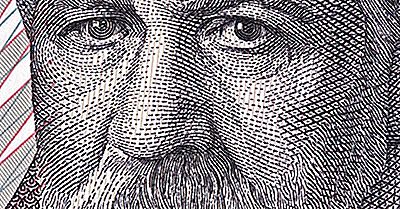Sigmund Freud is generally regarded as the pioneer of psychoanalysis and he has made great progress in the field of neurology, psychotherapy and psychoanalysis. Freud’s work has been widely studied because it explores new ways to try to understand the human personality. Psychoanalysis is a clinical means of treating psychopathology through dialogue between a patient and a psychoanalyst.
5. Youth
Freud was given the name Sigismund Schlomo Freud at his birth on May 6, 1856, in Freiberg, which is now part of the Czech Republic. Freiberg at the time was part of the Austro-Hungarian Empire. His parents were Jewish and his father worked as a wool merchant. The family settled in Vienna where Freud went to school. He has demonstrated high academic abilities, particularly in the fields of mathematics, Latin, Greek, history and science. Freud was proficient in German, French, Italian, Spanish, English, Hebrew, Latin and Greek. He was admitted to the University of Vienna at 17 to pursue medical studies and to graduate in 1881.
4. Career
Freud’s career began at the Vienna General Hospital in 1882 where he worked in different departments. At the start of his career, Freud was influenced by his colleague Josef Breuer, who successfully treated a patient suffering from hysteria. The patient, named Bertha Pappenheim, overcame physical symptoms by speaking out about past traumatic events. This case inspired Freud to pursue psychology and, in 1895, he proposed that physical illnesses are most often external manifestations of trauma deeply suppressed in “Studies in Hysteria”. Freud left Vienna for Paris in 1885 and studied under the tutelage of Jean Charcot, an accomplished neurologist who was researching hypnosis. Upon his return to Vienna the following year, Freud established a private practice and married Martha Bernays. The last of her six children, Anna Freud, also became a psychoanalyst.
3. Major contributions
Sigmund Freud specializes in nervous and brain disorders. He realized that hypnosis was not as effective as he had hoped and therefore adopted a new method, where he freely engaged with the patients. He created a comfortable environment for the patient and encouraged them to speak out about their concerns. In 1896, Freud became the first to use the word psychoanalysis to describe his new treatment, thereby laying the groundwork for the field. Freud published revolutionary theories such as “dream interpretation”, in which he argued that the energy of the mind, if not released, would manifest in dreams. He suggested that dream analysis could treat neurosis.and latent content . The first was images and sounds, while the second referred to the hidden meaning of the dream. In his work entitled “The psychopathology of everyday life”, he examined the dynamic unconscious. He began lecturing at the University of Vienna in 1902 and was a major figure in the Psychoanalytic Society. Other renowned psychologists, including Carl Jung, were on his list of followers.
2. Challenges
Sigmund Freud’s work has been criticized as much as it has been praised for introducing new methods instead of classic methods. Freud’s work in the areas of sexuality, particularly with regard to homosexuality and infantile sexuality, has received the most severe criticism. When the Nazis occupied Germany in 1933, Freud’s books were among those that were burned. He sought exile in England in 1938 after the Nazis invaded Austria.
1. Death and inheritance
Sigmund Freud asked his doctor to give him a lethal dose of morphine after his cancer became unbearable. He had been suffering from jaw cancer for some time. He died on September 23, 1939 and his body was cremated. We remember Freud for his important contributions to psychology. He popularized terms such as unconscious, conscious and proposed theories to explain the human personality. Freud was a pioneer in the field of psychoanalysis and his work served as the basis for further research in the discipline.

